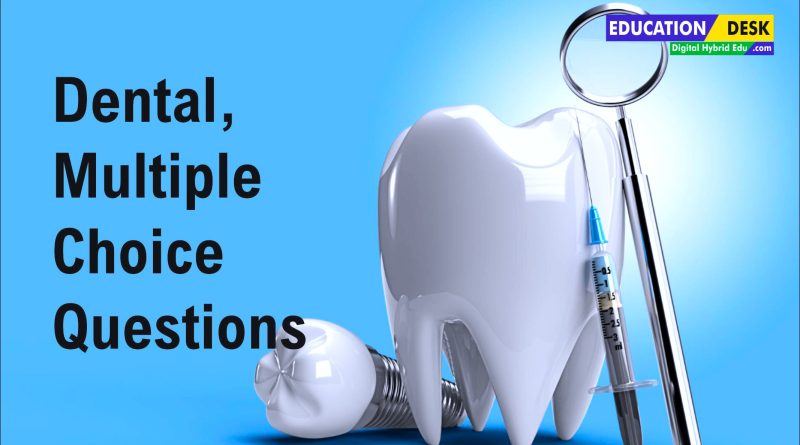Test 8th (Trauma of the maxillofacial reign)
Select all correct answer options. What is the role of temporary immobilization
- prevent infection
- reduce pain
- bring fragments normal anatomical position
- reduce the risk of asphyxia
- reduce bleeding
The first stage of medical evacuation, where the dentist appears
- srting point
- field mobile specialized hospital
- regiment medical center
- specialized hospital department
- separate medical battalion
Classification of soft tissue wounds of the maxillofacial area is carried out in accordance with
- affected tissue
- topographic area (chin, etc.)
- traumatic agent (aggression, traffic accident, work)
- anatomical and pathological form
- time elapsed after the incident (acute, chronic, festering)
- all answers are correct
Features of primary surgical treatment of wounds in the maxillofacial area are:
- stop bleeding, antiseptic treatment, sutures and bandages
- economical excision of tissue in the wound area, use of primary plastic surgery, wound suturing (suturing the mucus membrane t the skin)
- antiseptic treatment, suturing and bandaging
- excision of necrotic tissue, removal of blood clots, wound drainage
- antiseptic treatment, excision of necrotic tissue, suturing the wound on itself
Delayed primary surgical treatment is performed
- after 48 hours
- after the appearance of granulations in the wound
- 24 to 48 hours after injury
- first 24 hours
- after the beginning of epithelization of the wound edges
Dislocations of the lower jaw associated with joint disease leading to disruption of the articular surfaces of the bones are
- traumatic
- familiar
- pathological
In case of tooth trauma (bruise, dislocation), the first signs of hematoma of the pulp cavity (change in enamel color) appear in the area
- answers 2+4
- cutting edge or chewing surface
- vestibular surface
- mesial or distal surfaces
- oral surface
Select all correct answer options. Post-traumatic asphyxia may occur due to
- spasmodic narrowing of the airways
- displacement of the velum in case of fractures of the v.ch.
- Comminuted fracture of the chin area
- no answer is correct
- swelling of the larynx when a hematoma occurs
Select all correct answer options. Tooth luxation occurs as a result
- complete rupture of the dentoalveolar ligament
- fracture of the upper or lower jaw
- alveolar bone fracture
- in none of the above situations
- bruise or partial rupture of the dentoalveolar ligament
With an impacted tooth dislocation, the following diagnostic signs are possible:
- On the radiograph, the periodontal gap is widened
- its cutting or chewing surface is located below the adjacent teeth
- answers 1+3
- The periodontal fissure is not visible on the radiograph
- answers 1+2
Select all correct answer options. The most severe common early complications of jaw fractures
- phlegmon, acute osteomyelitis, sinusitis
- traumatic shock
- occlusion disorders
- concussion
- heavy bleeding
The optimal method of transport immobilization for jaw fractures is
- gypsum bandage
- Hippocrates cap
- circular parietomental bandage
- compression-distraction device
- Pomerantseva-Urbanskaya bandage
Periodically recurring dislocations of the lower jaw are
- traumatic
- pathological
- familiar
In case of incomplete lateral tooth dislocation, the following diagnostic signs are possible:
- the tooth is motionless
- the tooth is located outside the dental arch and is held only by the mucous membrane
- the tooth is located in the hole “deeper” than the neighboring teeth and has no contact with antagonists
- On the radiograph, the periodontal fissure is widened
- The periodontal fissure is not visible on the radiograph
The primary delayed suture for facial wounds is applied
- 6-7 days
- 7-8 days
- 8-9 days
- 4-5 days
- 9-10 days
Methods of temporary immobilization jaw fractures at the stages of pre-hospital evacuation
- dental splints
- compression – distraction device
- orthopedic device
- improvised bandages
- bone suture
Select all correct answer options. MCLs are divided int three main floors
- upper
- average
- rear
- side
- lower
Late secondary suture facial wounds is applied
- after rejection of necrotic tissues and the appearance of granulations
- after reducing tissue swelling
- 4-5 days
- after epithelization of the wound
- with the beginning of scar formation
First medical aid to those wounded in the maxillofacial area is provided in
- separate medical battalion
- regiment medical center
- sorting point
- battalion medical center
- field mobile specialized hospital
An early secondary suture facial wounds is applied
- after reducing tissue swelling
- 8-9 days
- after rejection of necrotic tissues and the appearance of granulations
- 4-5 days
- after epithelization of the wound
Taking into account the time elapsed form the moment of injury, dislocations of the lower jaw are divided into
- front and rear
- sharp and old
- traumatic, habitual, pathological
- complete and incomplete
- one-sided and two-sided
Late primary surgical treatment of facial wounds is carried out after
- 48 hours
- 72 hours-
- 24 hours
- 8-12 hours
- 8 days
Dislocations of the lower jaw caused by mechanical impact are
- familiar
- pathological
- traumatic
Subluxation is
- acute dislocation
- complete acute dislocation
- old dislocation
- lateral dislocation
- incomplete dislocation
- fracture- dislocation
According to the mechanism of occurrence, dislocations of the lower jaw are distinguished
- one-sided and two-sided
- sharp and old
- complete and incomplete
- front and rear
- traumatic, habitual, pathological
Depending on the direction of displacement of the articular head, dislocations occur
- complete and incomplete, traumatic, habitual, pathological
- sharp and old
- front and rear
- one-sided and two-sided
Early surgical treatment is carried out in
- first 6 hours
- after the appearance of granulations in the wound
- after 48 hours
- first 24 hours-
- 24 to 48 hours after injury
Indicate the diagnosis corresponding to the following clinical picture – wide open mouth, displacement of the chin down and forward, severe pain, speech is difficult, chewing is impossible. On both sides in front of the tragus of the ear there is a recession, a protrusion is determined under the zygomatic arch
- unilateral dislocation of the lower jaw
- bilateral posterior dislocation of the mandible
- bilateral anterior dislocation of the mandible
- bilateral fracture of the lower jaw along the condylar processes with displacement
What kind of dislocating causes rupture of the joint capsule?
- anterior dislocation
- bilateral dislocation
- acute dislocation
- unilateral dislocation
- incomplete dislocation
- posterior dislocation
- habitual dislocation habitual dislcation
Classificatin of soft tissue wounds of the maxillofacial area is carried out in accordance with
- traumatic agent (aggression, traffic accident, work)
- topographic area (chin, etc.)
- anatomical and pathological form
- all answers are crrect
- affected tissues
- time elapsed after the incident (acute, chronic, reinfected)
Depending on the location of the dislocation, they may be
- front and rear
- sharp and old
- one-sided and two-sided
- cmplete and incmplete
- traumatic, habitual, pathological
First pre-hospital medical aid for these wounded in the maxillofacial area is provided in
- sorting point
- regiment medical center
- battalion medical center
- separate medical battalion
- field mbile specialized hspital
Does the joint capsule rupture during anterior dislocating of the mandible?
- is torn
- desn’t break
The main task of pre-hospital medical care for wounded in the maxillofacial area
- eliminate the threat of asphyxia
- move ot shelter
- take anamnesis
- get a medical card
- feed the wunded
Select all correct answer options. Emergency care for combined injuries includes
- emergency care for shock
- stop bleeding
- support of vital systems
- none of these options
- application of an aseptic dressing and temporary immobilization of bone fragments+
Methods of temporary immobilization for jaw fractures at the stages of pre-hospital evacuation
- orthopedic device
- standard dressings
- cmpressin-distractin device
- dental splints
- bone suture
What is the main reason that the maxillofacial area is more susceptible to injury?
- unprotected (all traumatic agents are often directed towards the face), predisposed, fragile
- important organs are located in this area (eyes, ears, nose, salivary glands, etc.)
- rich in blood vessels, nerves, lymph nodes, etc.
- all answers are correct
- thin skin, connective tissue – practically no adipose tissue
Normally, the articular head f the lower jaw is located
- at the apex of the articular tubercle
- on the posterior slope of the articular tubercle
- on the anterior slope of the articular tubercle
The task of pre-hospital medical care for wounded in the maxillofacial area
- feed the wunded
- temprary stop of bleeding
- move to shelter
- take anamnesis
- get a medical card
Transport immobilization is imposed for a period
- 7 days
- 2 weeks
- 6 weeks
- 3-5 days
In wounds of the maxillofacial area, the affected tissues may be
- cranial nerves (trigeminal, facial, hypoglossal, etc.)
- deep (skin, muscles, glands, mucosa)
- with or without tissue defect
- all answers are crrect
- branches of the external carotid artery
- superficial (skin, muscles)
Scope of assistance for injuries to the face and jaws provided at SVPKhG (VPNhG)
- preparation for evacuation to the rear hospital base
- specialized complete surgical treatment of wounds with plastic elements
- final stop of bleeding, recovery from shock
Transport immobilization for jaw fractures is carried out
- cmpressin-distractin device
- circular parietmental bandage
- Smooth splint
- plaster cast
- Zbarzh apparatus
The main task of pre-hospital medical care for wounded in the maxillofacial area
- anti-shock measures
- get a medical card
- feed the wounded
- take anamnesis
- move to shelter
Depending on the size of the divergence of the articular surfaces, dislocations of the lower jaw can be
- sharp and old
- traumatic, habitual, pathological
- front and rear
- complete and incomplete
- one-sided and two-sided
What kind of dislocation causes a fracture of the bone wall of the external auditory canal?
- old dislocation
- acute dislocation
- anterior dislocation
- posterior dislocation
- habitual dislocation
In case of incomplete or impacted dislocation, it is indicated as an emergency aid
- its immediate extraction
- its immediate replantation with socket revision and root canal filling
- reduction into the dental arch with reliable fixation to adjacent teeth and observation (possibly delayed canal filling after 4 weeks)
- delayed replantation
- observation
With an impacted tooth dislocation
- delete
- no manipulations are performed
- set and not fixed
- fixed with a smooth splint to the teeth-
- Replant
1st to 7th MCQs Link Click Here
Note: Any wrong Answer or option , This website not responsible for this error .

